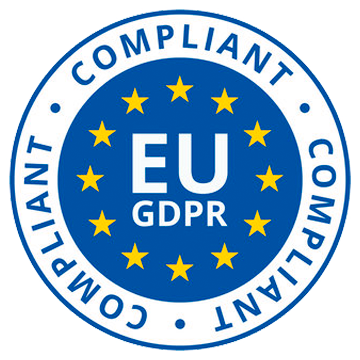Before you launch a business, you need a strong business plan. Without a clear direction of where the company is heading, the business will fail.
Perhaps one of the most critical aspects of the business plan is the executive summary. It provides a comprehensive snapshot of the rest of the business plan. When investors read the executive summary first, they make a critical decision on whether the rest of the document is worth reading.
So, how do you write an executive summary? What are the vital things you need to include? We dive into everything you need to know when crafting an influential executive summary and business plan.
What is an Executive Summary?
An executive summary definition can be summarized as the opening section of a proposal or business plan summary. It delivers a brief, comprehensive overview of the business document and lays out the main points. These highlights give a snapshot of the critical components of the business that will make or break its success. Executive summaries are utilized in the business world, but they also have a place in academia.
Executive summaries range in length, usually between one to five pages. It is best to write the summary in shorter paragraphs and sections. When it comes to business writing, concise language is most suitable for the ideal audience who will be reading it.
The target audience is usually investors, board members, and other critical business leaders. An executive summary should convince someone of the worthiness of a business or venture. Every executive summary should be written with a value-first, informative approach. The executive summary writer should convey this message consistently throughout the document.
The executive summary and an abstract are not the same things. An abstract is a supplemental overview of a large document that is not meant to provide direct value to the reader. However, the executive summary is a concise version of the primary document. The reader can usually review this separately because it encompasses the critical takeaways from the overall document.
What are the Benefits of Having an Executive Summary?
Because the target audience for an executive summary includes executives, CEOs, managers, and investors, you want to maximize their time. These high-profile people are busy, which is why they all need a snapshot of the larger document that conveys the critical points.
This is a business plan provides a valuable overview of the longer document. It allows the reader to understand what they can expect to gain from the proposal. Oftentimes, executives will review the executive summary to make an informed decision on whether they should read the rest of the proposal or business plan.
When it all comes down to it, the executive summary might be the only section that the reader will go through. Therefore, it serves a vital purpose in communicating the necessary factors of potential business success. The goal of the proposal is to get a meeting or reach the next steps with an investor. A strong executive summary template will get your foot in the door and increase your chances of obtaining funding.
How to Write an Executive Summary
Although we will outline the critical components of an executive summary format, there is no uniform structure to follow. We will dive into the necessary guidelines to know to make sure your proposal or business plan will earn the attention and praise of the target audience.
Opening Paragraph
When you write the opening paragraph of an executive summary, you want to grab the attention of the reader immediately. Much like any play, movie, or form of entertainment, the executive summary needs a meaningful hook.
A prime executive summary example will have a first paragraph that clearly explains what the company does, why it does it, and the specific value it provides to its customers. Starting the executive summary with a story or anecdote could entice the reader and communicate the purpose in a relatable way.
The opening paragraph needs a comprehensive statement that captures the concept of the executive summary itself. When you write the first sentence, it should intrigue the reader to follow through with the rest of the business plan or proposal.
Establish a Consistent Tone
When it comes to writing an executive summary, think about your core strengths. As you outline these points, it would be best to list them as bullets. Utilize concise language to communicate what ideas drive your business.
Your core values should tell a story that solves an issue for your audience. It should clearly define what your business does, how it provides value for others, and why your company is the best option. Think deeply about the unique aspects of your business and what sets it apart.
As you form the rest of your executive summary, it is critical to think about these questions:
- Do you have a high-potential partnership with a vendor, influencer, or organization?
- Do you have a large-sustainable customer base?
- Does your product or service have traction?
- Does your product have technology or patents associated with it?
Additional Tips
As we dive into these extra tips, it is important to highlight yet again what your target audience is. These readers are busy, high-level people, which is why you need to remove the fluff and get to the point. The more direct your verbiage is, the more engaged your reader will be.
The target audience is also a collection of people who are experts in their given field. Therefore, you should be careful about your phrasing, tone, and word choice. Because your target audience includes people of influence, you should select your words carefully.
Knowing these fundamentals, here are some other vital tips to remember as you build out the executive summary:
- Streamline the essential points – consolidate the key concepts quickly for easy reading.
- Be informative – deliver enough knowledge for the target audience to properly digest the plan, research, or proposal.
- Be a guide – through your recommendations in the executive summary, assist the executives in making a sound decision.
- Be transparent – explain clearly how you arrived at the results, and why they are important.
- Summarize – make sure to recap the document’s methods, purpose, scope, findings, recommendations, and results.
- Show your “why” – be upfront about why you are making the recommendations and how they benefit the reader..
- Provide as much value as possible – after the reader peruses the executive summary, he or she should have ample information to decide whether to analyze the whole document.
Do you need to convert a Word, PPT or other kind of document to PDF?
Use Sizle’s free PDF Converter for fast and free file conversion.
Sections to Include in the Executive Summary
Now that you are aware of the essentials of writing an executive summary, it’s time to put those skills into action. Here are some key sections you can include in your executive summary.
Business Opportunity
One of the first things to address in the executive summary is the demand for your business. The reader should understand how much people need your product or service. The executive summary should also give a detailed explanation of how you will meet this demand.
This passage should be backed up by thorough research and data. The overall demand for your product or service will give investors a good idea of how successful your company will be in the future. What age groups will benefit from the business? The uniqueness of your product will also play a critical factor in how much people will demand the product.
Your company’s action plan is also critical in outlining the business opportunity. The executive summary should give a clear explanation of how you will distribute your product or service to meet the demands of the market. When investors see that you have a game plan to satisfy a quantifiable need, they will be more likely to read on.
Business Model
The business model section of the executive summary should outline what your business offers. It also expands upon why your product or service is attractive to your customers. This part of the executive summary will build off the business opportunity because it explains why it solves a need for customers.
As you build out this section, focus less on what the product is, and more on how it makes other people’s lives easier. Does your product or service help people live happier, healthier lives? Does the product or service save people time or make something more convenient for them?
When you expand upon the business model in the executive summary, it should also outline how the product or service is sustainable into the future. Will your product or service yield repeat customers, such as a subscription business? If your business will evolve into more products or services, you should also utilize this space to address that.
Target Market
Toward the beginning of the executive summary, you should also take the time to describe the demographic you are trying to reach. The investors and other readers should understand your customer base, and why your product or service reaches that specific demographic.
Your target market will also outline your sales and marketing strategy, which we will describe later. Where your customers spend their time and attention will depend on their demographic, which is a concept you should address in this section.
If your demographic is wide-ranging, you should describe your rationale for each subgroup within the target market. This section should also give a detailed analysis of how you found this information. It would be best to provide a distribution of the subgroups of your target market, broken up by percentages.
You can blow the reader out of the water by going into depth on your ideal customer. It will show that you did your homework and have a good foundation for your business. Much like you write the executive summary with the investor’s goals in mind, you want to use the target market section to write with the potential customer in mind.
Competition
Market share is an important metric for investors to know, which is why you include the competitive analysis in the executive summary. This section outlines which businesses you will compete against for market share. It may also uncover the barriers to entry, how strong your competitors are, and other external threats toward the success of the business.
When you build out the competition section of the executive summary, it is vital to highlight what your company offers that your competitors do not. Why will customers purchase your product instead of your competitors? Outlining these differentiable factors should be done through a bulleted list so that you can hammer the point home for your investors.
Here are some things to consider when you layout your company’s unique attributes:
- Supply chain – can you produce, distribute, and sell your product in a more cost-effective way than your competitors?
- Time – does your product or service save your customers more time than the competitor’s product or service?
- Price – can you offer your product or service at a lower price because of your production or supply chain process?
- Traction – is your product or service already being used at a high level, like in a well-known organization?
- Branding – does your company stand for a unique social cause, redefine the relationship with its customers, or already have sustainable brand equity?
These characteristics are all essential to address when you outline your competitive analysis. When you highlight them throughout the executive summary, focus on the special activities that your business is involved in, that your competitors are not.
Sales and Marketing Strategy
You can have the best product or service in the world. However, if you do not know how to communicate this to your customers, the business is doomed. As you create the sales and marketing strategy section, you should focus on how you will create brand recognition with your customers. More importantly, how will you position your product or service to catch the attention of your eyes in a technology-driven world?
Investors want to know that your marketing efforts are forward-looking. This part of the executive summary is the perfect place to highlight your digital marketing strategy. This mission includes the specific actions you will take to drive more traffic to your company website or social media.
Your marketing strategy could also include influencer marketing campaigns, community partnerships, and other campaigns to position your brand in the eyes of the consumer.
When considering the sales portion of the strategy, it is critical to highlight the unique customer value proposition of your product or service. This idea will be the basis of how the sales team interacts with customers, vendors, and other external stakeholders. The sales strategy could also walk through how the team will be trained on selling the product or service.
Financial Analysis
One of the most important things to consider for an investor is the return on their investment. They want to ensure they make their money back, which is why the financial analysis is a critical component of the executive summary. You should have a clear plan on how you will manage finances. The company should also have an accurate projection on how much money it will make in the first three to five years.
When it comes to handling the finances, the executive summary should detail how these decisions will be made. It is important to list out the key players involved, how finances will be reported, and the flow of decision-making.
Transparency is also vital when reporting your financial projections. Not only should you forecast your sales for the readers, but you should also get specific on the expenses on other line items. It would be best to have the basic financial statement projection for the income statement, balance sheet, and statement of cash flows.
Ownership and Team Members
The executive summary should also shed light on how influential internal stakeholders are. These people include company ownership, executive team, board of directors, and key leaders within the organization. A company is only as good as its people, which is why you can utilize this section to communicate excellent leadership.
As you highlight the critical team members, you should also convey the skills and capabilities that each one brings. How many years of experience does each team member have? Do many members of the executive team have a proven track record in the industry? The executive summary should do an excellent job of providing a “mini resume” of each important player.
Execution Plan
The implementation plan should be the final section of the executive summary. It will provide a detailed blueprint on how you will convert the sections above into success. The execution plan should communicate to the investor how you will turn the idea into a sustainable business in the future.
The implementation plan should also provide a timeline of when things will be complete. There should be critical dates about when the product or service will go to the market. If the executive summary extends far into the future, this section can also project when expansion may occur.
Final Wrap Up
Launching a new business is an exciting process. With a solid business plan and executive summary, you can gain clarity about what your goals are. More importantly, you can engage the important people who will invest in the business. As a next step, here’s a guide on how to write a winning business proposal.
We have outlined the recipe for success for the executive summary. It is now on you to put it into practice and show the world why your business can make a difference.
Turn docs into deal intelligence
Sizle shows what really happens after you hit send.
Free 7-day trial
Unlock insights instantly
Join 30,000+ professionals



